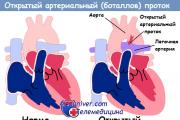Study of macrohemodynamics using volumetric compression oscillometry in pregnant women with gestosis. Assessment of the severity of preeclampsia according to the Savelieva scale. Severity of preeclampsia according to the Savelieva scale.
The cardiotocography method can be used during pregnancy to detect heart rhythm disturbances, determine fetal presentation, identify multiple pregnancies, diagnose acute hypoxia during childbirth and chronic hypoxia during pregnancy. A test called cardiotocography is prescribed to all pregnant women after 30 weeks of pregnancy. This is done to assess the condition of the fetus. CTG is also installed during childbirth to see the contractile activity of the uterus and how it affects the condition of the child. The deterioration of the baby’s well-being is reflected in the number of heartbeats, which allows doctors to take the necessary measures to improve his condition.
- Determination of the strength and frequency of uterine contractions.
- Detection of bradycardia and tachycardia, registration of normal heart rate.
- Assessment of the condition of the fetus during pregnancy and during the birth process.
- Detection of fetal respiratory distress syndrome and decisions about method of delivery.
- A burdened history of gynecology or obstetrics, especially if there was fetal hypoxia or antenatal death in previous pregnancies.
- Preeclampsia, edema of pregnant women, preeclampsia of varying severity.
- Arterial hypertension.
- Anemia in pregnancy.
- Rhesus conflict.
- Post-maturity.
- Oligohydramnios or polyhydramnios.
- Threat of premature birth.
- To assess blood flow in the mother-fetus system and fetal hypoxia and its treatment.
- Monitoring in case of unsatisfactory CTG results.
- Multiple births.
- Intrauterine growth retardation.
- Severe concomitant pathology of the mother.
- Decreased physical activity.
- Disturbances identified during Doppler measurements.
- Hypotrophy and hypertrophy.
- Umbilical cord entanglement.
- Scar on the uterus.
- Premature aging of the placenta.
- Suspicion of an umbilical cord knot.
- 1. Basal (average) fetal heart rate.
- 2. Amplitude of oscillation (variability) of heart rate.
- 3. Amplitude of the myocardial (motor-cardiac) reflex.
- 4. Number of fetal movements during the monitoring period.
- 5. The nature of uterine contractions, if any.
- 6. The nature of the reaction of the fetal heart rate to uterine contractions.
- The step test is performed by physical activity. A pregnant woman climbs the stairs and descends 2 steps within 3 minutes. As a result of this load, a decrease in uteroplacental blood flow occurs. If there are disturbances in the fetal condition after the test, a smoothed curve is recorded, bradycardia develops, which may be followed by prolonged tachycardia. In the absence of disturbances, motor activity appears with an adequate amplitude of the motor-cardiac reflex, and the amplitude of oscillations increases.
- Sound test. The stimulus is a sound signal with a frequency of 3 kHz, lasting 5 seconds and intensity 95–100 dB. With a normal reaction, there will be an increase in heart rate by 15–20 beats/min. We can talk about hypoxia if there are no changes or an increase of 1–8 beats/min.
- The oxytocin stress test examines the fetal response to decreased blood flow during myometrial contraction caused by oxytocin. The test modulates the stress to which the fetus is exposed during childbirth.
- Deceleration is a decrease in heart rate by more than 15 beats/min. They are caused by fetal movements or uterine contractions. The shape, depth, duration, and time of heart rate equalization are assessed. The early ones coincide with the beginning of uterine contractions, and the heart rate is restored with the end of the contraction. The reason for deceleration is the impact on the head, most often at the end of the second stage of labor when passing through the birth canal. If they are detected on CTG, the prognosis for the fetus is favorable - the condition does not suffer, there is no acidosis. Late ones are delayed in relation to the beginning of the contraction and the heart rate is restored after the end, not always to the initial level. An increase in their number and depth, lack of alignment or tachycardia is considered unfavorable.
- Variable decelerations occur when the umbilical cord is compressed. They are characterized by a sharp onset and depth of more than 15 beats/min, and a slowing of the fetal heart rate. Severe are more than 35 beats/min. Can be eliminated by changing the body position of the pregnant/parturient woman. If the rhythm is not restored to the original one, this is an unfavorable prognosis.
- Basal rhythm: 0 points are given when the heart rate is up to 100 or above 180 beats/min, 1 point is given when the heart rate is from 100 to 119 beats/min. and from 161 to 180 beats/min., 2 points are given when the heart rate is from 120 to 160 beats/min.
- Variability: 0 points are given for results up to 3 beats per minute, 1 point is given for results from 3 to 5 beats per minute, 2 points are given for results from 6 to 25 beats per minute.
- Accelerations: absence is regarded as 0 points, from 1 to 4 is regarded as 1 point, from 5 and above is regarded as 2 points.
- Decelerations: severe are assessed as 0 points, mild and moderately severe are assessed as 1 point, complete absence or shallow short ones are assessed as 2 points.
Show all
What is CTG?
Cardiotocography is a method for assessing the functional state of the fetus at the time of examination. CTG is an abbreviation for cardiotocography. This is a method based on the study of his heart rhythm and changes in the nature of movements, which includes an assessment of the contractile activity of the uterus. To evaluate the results of the study, the following can be used: 10-point Fisher scale, 12-point Krebs scale, 10-point Savelyeva scale.
According to the order of the Ministry of Health of the Russian Federation No. 572 of 2012, CTG is necessary for all pregnant women from 30 weeks (with physiological pregnancy) at least three times after 30 weeks and always during childbirth. It is possible to carry out this procedure starting from 28 weeks of pregnancy according to indications or in case of multiple pregnancy. CTG is performed for:

Types of cardiotocography
There are indirect (external) and direct (internal) CTG. The most common is the first one. It is produced during pregnancy and during childbirth. It is performed by placing two sensors on the pregnant woman’s stomach and securing them with a belt. An ultrasound sensor is used to record the fetal heart rate, and a uterine sensor (TOCO) is used for external hysterography, that is, to see the tone of the uterus or its contractile activity.

The examination is carried out in a position either lying on the side, or on the back, or semi-sitting (preventing compartment syndrome). The ultrasound sensor is treated with an ultrasonic contact medium to ensure the best possible contact with the skin. It is installed on the anterior abdominal wall in the area of maximum audibility of the fetal heart, in case of cephalic presentation below the navel, and in case of breech presentation at the level or slightly above the umbilical region. The TOCO sensor is placed at the angle of the uterus.
If CTG is performed during pregnancy, the patient may be given a special device in her hand, with the help of which the baby’s movements are independently noted by pressing a button, but there are devices that themselves note the motor activity of the fetus.
The procedure takes from 30 to 60 minutes, which is associated with periods of sleep and wakefulness. The procedure will be informative only during periods of wakefulness of the fetus.
Direct CTG is performed only during childbirth. This is due to the fact that the scalp electrode, which records the electrical impulse, is attached directly to the child’s scalp. For this, the necessary conditions are the cephalic presentation of the fetus, the absence of amniotic sac (departed amniotic fluid), and sufficient opening of the uterine pharynx. A special heart monitor device calculates the fetal heart rate based on the data received.
Direct CTG is advisable to perform in patients with obesity and/or polyhydramnios and who do not have an increased risk of acquiring an ascending infection. The remaining women undergo indirect CTG throughout the entire period of labor or several times during labor.

Fetal heartbeat by week - norms in boys and girls, causes of deviations
Indications for unscheduled studies
The frequency of CTG registrations is determined by the nature of obstetric and extragenital pathology in the pregnant woman and the motor activity of the fetus. During a normal pregnancy, a cardiotocogram is recorded at intervals of 7-14 days. If there are complaints of a decrease in the number of movements, if there is a suspicion of a violation of the functional state of the fetus, and during a high-risk pregnancy due to a predisposition to the development of placental insufficiency, monitoring of the fetal condition is prescribed from several times a week to several times a day. In addition, an ultrasound is prescribed.
Indications for additional tocography:

Preparation for the procedure
There is no need for special preparation for the study. The procedure is completely safe and painless for the fetus and mother. It is better to conduct the study after eating so that the fetus is awake during the procedure.

Before CTG you should visit the toilet, as the study lasts at least 30 minutes. During CTG, the position of the body should not be changed without the permission of the doctor performing the study.
Decoding the results
The monitor shows a curve to evaluate the following parameters of the cardiotocogram:
Basal heart rate is the main parameter in CTG analysis, in relation to which all subsequent analysis is performed. A physiological heart rate is considered to be from 120 beats per minute to 160 beats per minute. Tachycardia will be values above these numbers. Tachycardia can be considered as a compensatory-adaptive reaction of the body to the pathological condition of the mother or in connection with taking drugs that cause an increase in heart rate. This may also be evidence of fetal hypoxia, malformations of the cardiac system, too short a pregnancy for the procedure, or anemia. When the causes are eliminated, the heart rhythm is restored.

A decrease in heart rate below 110 is considered bradycardia. This manifestation occurs from taking certain medications, during acute fetal hypoxia, when the fetal head is compressed by the mother’s pelvis (clinical discrepancy between the fetal head and the mother’s pelvis), when the true umbilical cord knot is tightened. Bradycardia is often an indication for the use of obstetric forceps and emergency caesarean section.
The amplitude of heart rate oscillation is from 7 to 15 beats per minute. If moderate variability in the curve is present at least occasionally, the fetus is considered to be relatively compensated. Reduced variability to 5 beats per minute or less is the cause of decreased placental and/or umbilical cord blood flow. Measures to reduce this indicator are aimed at directly or indirectly improving fetal oxygenation. If there is no effect from the measures taken, a decision is made on delivery. An increase in amplitude of 25 beats per minute or more reflects an adaptive response to the resulting hypoxia.
The motor-cardiac reflex is formed by the 28th week of pregnancy. Normally, fetal motor activity is accompanied by an increase in heart rate by 15-35 beats per minute. Adaptive manifestations during hypoxia lead to an increase in the amplitude of the MCR to more than 35 beats per minute. When the central nervous system is depressed during hypoxia, the amplitude is less than 15, until it disappears completely. A decrease or absence of the myocardial reflex can occur with the administration of medications (narcotic substances, magnesium), during a quiet phase - sleep, due to the immaturity of the central nervous system (up to 28 weeks). In the absence of these reasons, it is regarded as a serious sign of fetal hypoxia.
Movements of the child in the absence of contractile activity of the uterus must be recorded at least 6 episodes per 30 minutes of study and accompanied by an adequate amplitude of the MCR. The main diagnostically significant criteria for impaired functional state of the fetus during pregnancy will be a decrease or absence of variable heart rate and myocardial reflex.
Functional tests
In the absence of episodes of movement during CTG, functional tests are indicated. When assessing the results, they make it possible to differentiate the resting phase from state disorders:
Fisher and Krebs scale
There are several rating scales. The most common are Fischer and Krebs. Consider the Fisher scale. The parameter is scored from 0 to 2 points:
Normally, CTG during pregnancy with a data range from 8 to 10 points indicates a satisfactory condition of the fetus. A result of 6 to 8 points indicates fetal hypoxia; the study should be repeated. Less than 6 points indicates a threat to the life of the fetus.

The Krebs scale is different in that there is also such a parameter as the number of movements in half a minute: 5 movements or more are regarded as 2 points, from 1 to 4 are regarded as 1 point, no movements are regarded as 0 points. If the result is from 9 to 12 points - this is a satisfactory condition of the fetus, 6-8 points - fetal hypoxia, 0-5 points - severe fetal hypoxia. If the results say “figo suspicious,” this indicates fetal hypoxia.
The results can only be interpreted by a doctor. All clinical indicators of the pregnant woman and fetus, the time and conditions of the procedure and concomitant pathologies should be taken into account.
1. Finding out the due date. Determination of gestational age using objective data. The size (size) of the uterus. The height of the uterine fundus at different stages of pregnancy.
2. Ultrasound determination of gestational age. Determination of gestational age by ultrasound.
3. Duration of pregnancy. Determining the date of birth. Duration of pregnancy. Determining the due date.
4. Issuance of certificates of incapacity for work to pregnant and postpartum women. How much sick leave are given to pregnant and postpartum women?
5. Signs of previous labor. Signs of former pregnancies. Signs of former childbirth.
6. Assessment of the condition of the fetus during pregnancy. Electrocardiotocography. Direct and indirect electrocardiography (ECG). Fetal phonocardiography.
7. Cardiotocography. Indirect cardiotocography. Scale for assessing fetal cardiac activity during pregnancy.
8. Studying the reaction of the fetal cardiovascular system in response to movements. Non-stress test. Reactive and non-reactive non-stress test.
9. Oxytocin test. Contractile test. Negative oxytocin test. Positive oxytocin test. Possible oxytocin test.
10. Mammary test. Acoustic stimulation of the fetus. Atropine test. Interpretation of test results.
Cardiotocography. Indirect cardiotocography. Scale for assessing fetal cardiac activity during pregnancy.
Currently widely used in obstetric practice cardiotocography based on the Doppler principle. Modern cardiac monitors allow you to record changes in intervals between individual cycles fetal cardiac activity. The devices are also equipped dates sensors that allow simultaneous recording of contractile activity of the uterus and fetal movements. Distinguish indirect (external) and direct (internal) cardiotocography.
During pregnancy, use only indirect cardiotocography: It is currently the most common in childbirth.
The external ultrasonic sensor is fixed on the anterior abdominal wall of the mother in the place of best audibility of the fetal heart sounds, and an external strain gauge sensor for recording the contractile activity of the uterus - in the area of its fundus.
For assessment of fetal cardiac activity they study the basal rate, heart rate variability (oscillation frequency, oscillation amplitude), changes in heart rate (acceleration, deceleration). To unify and simplify the interpretation of antenatal CTG data, G.M. Savelyeva (1984) proposed an assessment in points (Table 7).
Scale for assessing fetal cardiac activity during pregnancyA score of 8-10 points indicates the normal condition of the fetus, 5-7 points - indicates initial signs of disruption of its vital functions, 4 points or less - serious changes in the condition of the fetus.
In addition to the analysis of cardiac activity at rest by using cardiotocography it is possible to evaluate the reactivity of the fetus during pregnancy by changes in its cardiac activity in response to spontaneous movements - a non-stress test or a stress test, to functional tests (introduction of oxytocin or atropine to the mother, short breath holding during inhalation and exhalation, physical activity, stimulation of the nipples of the mammary gland, acoustic stimulation, etc.).
Cardiotocography refers to methods for prenatal diagnosis of the condition of the fetus and is widely used due to the simplicity of the study, safety for mother and child, informativeness and stability of the information provided.
CTG records the fetal heart rate, both at rest and during movement, in response to uterine contractions and exposure to various environmental factors. In addition to the fetal heart rate (FHR), uterine contractions are also recorded during CTG. The method is based on the Doppler principle, and the fetal heart rate is captured by an ultrasonic sensor. The sensor that records uterine contractions is called strain gauge.
The need for CTG
According to the order of the Ministry of Health of the Russian Federation No. 572 dated November 1, 2012, CTG should be performed on a pregnant woman (with physiological pregnancy) at least 3 times in the third trimester, and always during childbirth.
CTG is performed
- in order to determine the fetal heart rate and the frequency of uterine contractions,
- assessing the condition of the fetus both before birth and during the birth process (during contractions and between contractions),
- identifying fetal distress and resolving delivery issues.
Additional indications for CTG are:
- complicated obstetric history;
- woman's anemia;
- Rhesus conflict pregnancy;
- post-maturity;
- a lot of water and little water;
- threat of premature birth;
- assessment of the effectiveness of treatment of fetoplacental insufficiency and fetal hypoxia;
- control after unsatisfactory CTG results;
- multiple births;
- delayed fetal development;
- severe extragenital pathology of the mother.
Dates
Cardiotocography is indicated from 32 weeks of gestation. It is also possible to conduct CTG earlier, from 28 weeks, and in shorter periods of pregnancy CTG is not performed at all due to the impossibility of correct interpretation of the results. The indicated pregnancy periods for CTG are based on the fact that only by the 28th week does the fetal heart begin to be regulated by the autonomic nervous system, and its heart rate responds to the movements it makes. In addition, by the 32nd week of gestation, the cyclicity of sleep and wakefulness of the unborn child is formed.
If the pregnancy proceeds without complications, then CTG is performed once every 10 days; in case of complications, but “good” results of previous CTG, the study is repeated after 5-7 days. In the case of intrauterine hypoxia, daily or every other day CTG is indicated (either until the fetal condition normalizes, or until the issue of the need for delivery is decided).
During labor (without deviations from the norm), CTG is performed every 3 hours. In case of complications - more often, as determined by the doctor. It is advisable to conduct the period of contractions under the constant monitoring of CTG.
Preparing for CTG
No special preparation is required for the study. You should familiarize the woman with some rules in advance:
- the procedure is absolutely safe for the fetus and painless;
- the study is not carried out on an empty stomach and immediately after eating, only after 1.5-2 hours;
- before CTG you should visit the toilet (the study takes from 20 to 40 minutes);
- in case of smoking, the patient should abstain from cigarettes for 2 hours before CTG;
- during CTG, the patient should not move or change body position;
- obtain written consent to conduct CTG from the woman.
Methods
CTG can be indirect (external) and direct (internal).
The examination is carried out with the woman either on her left side or half-sitting (to prevent compression syndrome of the inferior vena cava). The ultrasound sensor (which records the fetal heart rate) is treated with a special gel to ensure maximum contact with the pregnant woman's skin. The sensor is placed on the anterior abdominal wall in the area of maximum audibility of fetal heartbeats. A strain gauge that records uterine contractions is placed in the area of the right corner of the uterus (it is not lubricated with gel).
The patient is given a special device in her hand, with which she independently notes the baby’s movements. The procedure takes 20-40 minutes, which is due to the frequency of periods of sleep (usually no more than 30 minutes) and wakefulness of the fetus. Registration of the basal rhythm of the fetal heart rate is carried out for at least 20 minutes until 2 movements are recorded lasting at least 15 seconds and causing an acceleration of the heart rate by 15 heartbeats per minute.
Internal cardiotocography is performed only during childbirth and under certain conditions:
- opened amniotic sac and discharge of water;
- the opening of the uterine pharynx is at least 2 cm.
To conduct direct CTG, a special spiral electrode is applied to the skin of the presenting part of the fetus, and uterine contractions are recorded either by inserting an intra-amnial catheter or through the anterior abdominal wall. This study is considered invasive and is not widely used in obstetrics.
When conducting non-stress cardiotocography, the fetal heartbeat is recorded in natural conditions, taking into account fetal movements. If unsatisfactory results of non-stress CTG are obtained, tests (functional tests) are used, which is called stress CTG. These tests include: oxytocin, mammary, acoustic, atropine and others.

Decoding CTG
When analyzing the resulting fetal cardiotocogram, the following indicators are assessed:
- basal rhythm of the fetal heart rate, that is, the average heart rate between instantaneous heart rate readings either in the interval between contractions or over a 10-minute period;
- basal changes are fluctuations in fetal heart rate that occur regardless of uterine contractions;
- periodic changes are changes in fetal heart rate that occur in response to uterine contractions;
- amplitude is the difference in heart rate values between the basal rhythm and basal and periodic changes;
- recovery time - the period of time following the end of uterine contraction and the return to the basal heart rate rhythm;
- acceleration or increase in heart rate by 15-25 per minute in relation to the basal rhythm (a favorable sign, confirms the satisfactory condition of the fetus, occurs in response to movement, tests, contractions);
- deceleration - a decrease in heart rate by 30 or more and lasting at least 30 seconds.
Indicators of a normal antenatal cardiotocogram:
- the basal rhythm is 120-160 per minute;
- amplitude of rhythm variability within 10-25 per minute;
- there are no decelerations;
- registration of 2 or more accelerations within 10 minutes of recording.
Questionable cardiotocogram:
- the basal rate is either 100-120 or 160-180 per minute;
- the amplitude of rhythm variability is less than 10 per minute or more than 25;
- there are no accelerations;
- registration of shallow and short decelerations.
Pathological cardiotocogram:
- basal rate is either less than 100 per minute or more than 180;
- the amplitude of rhythm variability is less than 5 per minute (monotonic rhythm);
- registration of pronounced variable (having different forms) decelerations;
- registration of late decelerations (occurring 30 seconds after the onset of uterine contractions);
- sinusoidal rhythm.
Interpretation of CTG scores
To assess the condition of the fetus, the Savelyeva scale is used.
Table: interpretation of CTG scores
|
CTG parameters |
||||
|
Basal rhythm HR/min) |
more than 180 or less than 100 |
|||
|
Basal rate variability |
number of heart rate changes/min |
|||
|
change in heart rate |
5 or sine wave type |
5-9 or more than 25 |
||
|
Accelerations (per min) |
None |
Periodic |
Sporadic |
|
|
Decelerations (per min) |
Late long, variable |
Late short-term, variable |
Absent, early |
|
- 8-10 points indicates no problems
- 6-7 points - initial signs of hypoxia (inpatient observation is recommended, treatment is prescribed)
- less than 5 - hypoxia occurs, i.e. oxygen deprivation (prompt hospitalization required)
Some studies during pregnancy
Based on the results of scoring on the Savelyeva scale (8 points), the disease is assessed as moderate preeclampsia.
Clinical examination plan:
§ CBC – determination of Hb and platelets (in dynamics);
§ OAM – determination of protein level in urine;
§ Urinalysis according to Zimnitsky - determination of the concentration and excretory functions of the kidneys;
§ Coagulogram – determination of the state of the blood coagulation system;
§ Weighing (in dynamics) with calculation of pathological weight gain;
§ Control of fluid intake and output;
§ Measurement of blood pressure in both arms with calculation of pulse pressure - to identify possible fluctuations in blood pressure, assess the symmetry of blood pressure;
§ Biochemical blood test: ALT, AST, Bi levels - to determine the functional state of the liver;
§ Fetal ultrasound and Dopplerometry - determination of possible signs of fetoplacental insufficiency, hypoxia and fetal malnutrition;
§ Consultation with an ophthalmologist – to identify possible changes in the vessels of the fundus and retina;
§ Cardiotochography of the fetus in dynamics (daily).
Data from laboratory and instrumental research methods:
Ultrasound from 04/30/2012 Conclusion: no intrauterine pathologies of the fetus were identified.
OAM from 04/29/2012
color – straw yellow
specific gravity – 1021
protein – 0.101 g/l
leukocytes – 1 - 3 per field of view
squamous epithelium - in small quantities
bacteria - no.
UAC from 04/29/2012
WBC – 4.5 * 10^9
RBC – 3.9 * 10
PLT – 250 * 10^12
Blood type and Rh factor:
Blood type II
Rh factor – Rh + (positive).
Examination by an ophthalmologist(04/30/2012) – no pathological changes were detected.
Clinical and final diagnosis:
Pregnancy 38 weeks. Moderate preeclampsia.
Etiopathogenesis of the disease:
Preeclampsia- this is toxicosis of the second half of pregnancy, which is accompanied by a clinical picture of cerebral circulation disorders, arterial hypertension in combination with liver and kidney damage.
The main risk factors for developing preeclampsia:
1. The woman's age. The risk of developing preeclampsia increases with age.
2. Genetic predisposition.
3. Primipara women, especially in adolescence and after 35 years.
4. Multiple pregnancy.
5. Polyhydramnios.
6. History of arterial hypertension.
7. Diabetes mellitus.
8. Kidney diseases.
9. Hydatidiform mole.
In pregnant women with preeclampsia, a deficiency of certain placental enzymes that destroy vasoconstrictor substances has been identified. These vasoconstrictors in excess quantities can cause spasm of peripheral vessels and, accordingly, a decrease in placental blood flow. Fetoplacental insufficiency develops.
In addition, arterial vasospasm leads to an increase in systemic blood pressure and a decrease in renal blood flow. It is the cause of hypertension, proteinuria and edema in preeclampsia.
Treatment principles:
Non-drug therapy:
× diet, drinking regime, work and rest regime;
× therapeutic and protective regime: silence, peace, absence of bright blinding light;
× reducing the intensity of physical activity, balancing periods of sleep and wakefulness;
× as sedatives – herbal medicine.
Drug therapy:
× sedatives (motherwort, valerian);
× antihypertensive and anticonvulsants (magnesium sulfate) - to prevent seizures, lower blood pressure by acting on the wall of blood vessels and reducing their resistance to blood flow;
× infusion therapy – to normalize the acid-base state of the body (crystalloids, colloids);
× antioxidant therapy – in order to increase the protective and adaptive properties of the body.
Prevention of late gestosis
· pregnancy planning;
· strict adherence to the rules of hygiene and dietetics during pregnancy;
· timely registration with the antenatal clinic;
· systematic and careful monitoring of the pregnant woman in the antenatal clinic and during patronage visits;
· timely detection and treatment of extragenital pathologies;
· careful observation and rational treatment of pregnant women who are at risk of toxicosis.
Supervision diary
The patient's condition is satisfactory. Complains of pasty lower extremities. Blood pressure on the right arm is 110/70 mm Hg, on the left arm – 110/75 mm Hg. The pulse on the radial arteries is of the same frequency, 72 beats per minute, rhythmic. Body temperature 37.1° C. The skin is clean, visible mucous membranes are pink, without any features. Swelling in the lower extremities and anterior abdominal wall.
The abdominal circumference is 93 cm, the height of the uterine fundus is 30 cm. The fetal heartbeat during auscultation with an obstetric stethoscope is 140 beats per minute, clear, rhythmic. The best listening point is to the right of the navel. The position of the fetus is longitudinal, position II, cephalic presentation, the head is movable above the entrance to the pelvis. The uterus is in normal tone and painless on palpation. Physiological functions are normal, stool is regular. There is no discharge from the genitals.
List of used literature:
· G.M. Savelyeva “Obstetrics and Gynecology”, 2007, Moscow.
· E.K. Ailamazyan “Obstetrics” St. Petersburg, 2007.
· L.V. Tsallagova, L.S. Popova “Natural metabolites in the treatment of minor forms of OPG-gestosis”, 2006, Moscow.














